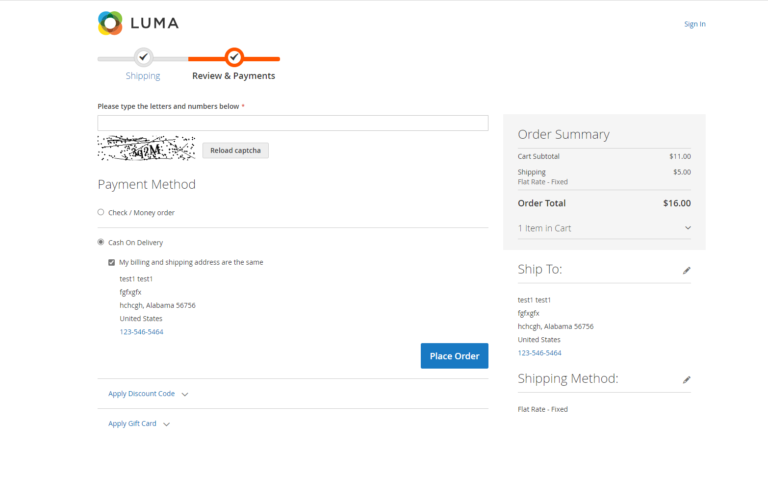Adding social proof to your eCommerce site is one of the absolute best ways to convert website visitors into customers.
In 2021, as many as 77% of shoppers “always” or “regularly” read online reviews when evaluating local businesses.
Whether your goal is to maximize conversions, attract more leads, or build authority for your brand, investing in social proof for your eCommerce site is a great place to start.
But how do you go from plain old reviews and ratings to social proof that stands out in 2022?
This article explores the best practices for adding social proof to your eCommerce site, including how to:
- Combine Social Proof with UGC
- Create a Sense of Community in Your Social Media Presence
- Not Limit Reviews to Product Pages
- Go the Extra Mile with Product Reviews
- Flaunt Your Earned Media
- Combine Social Proof with Cross-Selling.
- Showcase Your Reputable Customers
- Make Use of Google Reviews
- Show Real-Time Sale Notifications
Let’s get into it.
1. Combine Social Proof with UGC
One of the best ways to make the testimonials on your eCommerce site more convincing is to show website visitors that those reviews come from real people.
According to research, user-generated content is one of the most effective ways to engage consumers online.
- Firstly, research has shown that 72% of people feel that social proof is more credible than when a brand talks about its own products.
- Secondly, there’s the fact that shoppers increasingly understand how advertising works. Almost 8 in 10 people know when a brand is trying to advertise to them.
One solution to this problem might be collaborating with influencers. However, research shows that their power to convince is waning as well. According to TINT’s State of User-Generated Content for 2022, only 39% of shoppers trust influencers, with 61% of them feeling either neutral or distrustful.
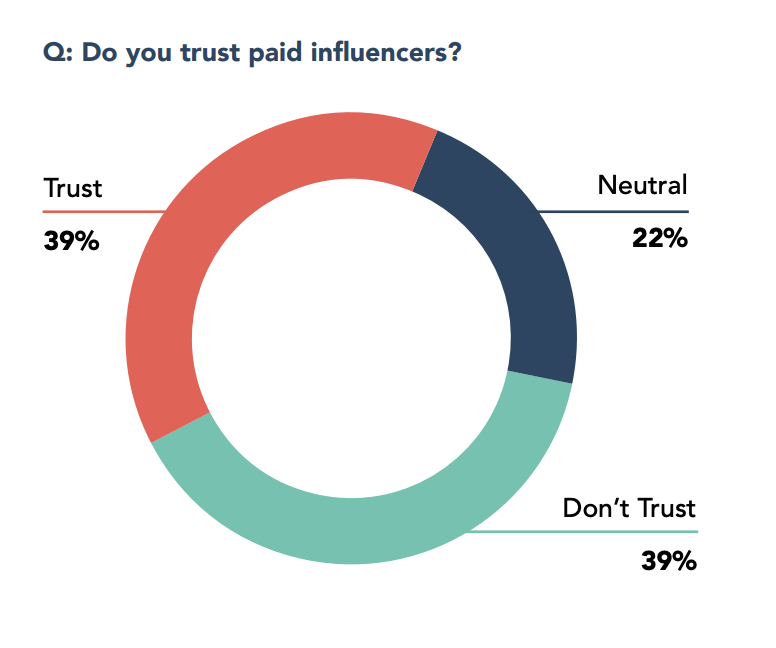
[Source: Tintup]
As you look at this data, it becomes clear that the only way to make social proof really work for your eCommerce brand is to combine it with UGC.
Fortunately, this doesn’t have to be rocket science. A solution as simple as allowing satisfied customers to post images or videos along with their testimonials is an excellent strategy for using UGC to elevate your social proof.
As you can see on the US Fireplace Store website, such a tactic allows potential buyers to see what products look like in real life, how they perform, and how they operate. It’s a tiny tweak, but it works wonderfully to boost conversions and trust.
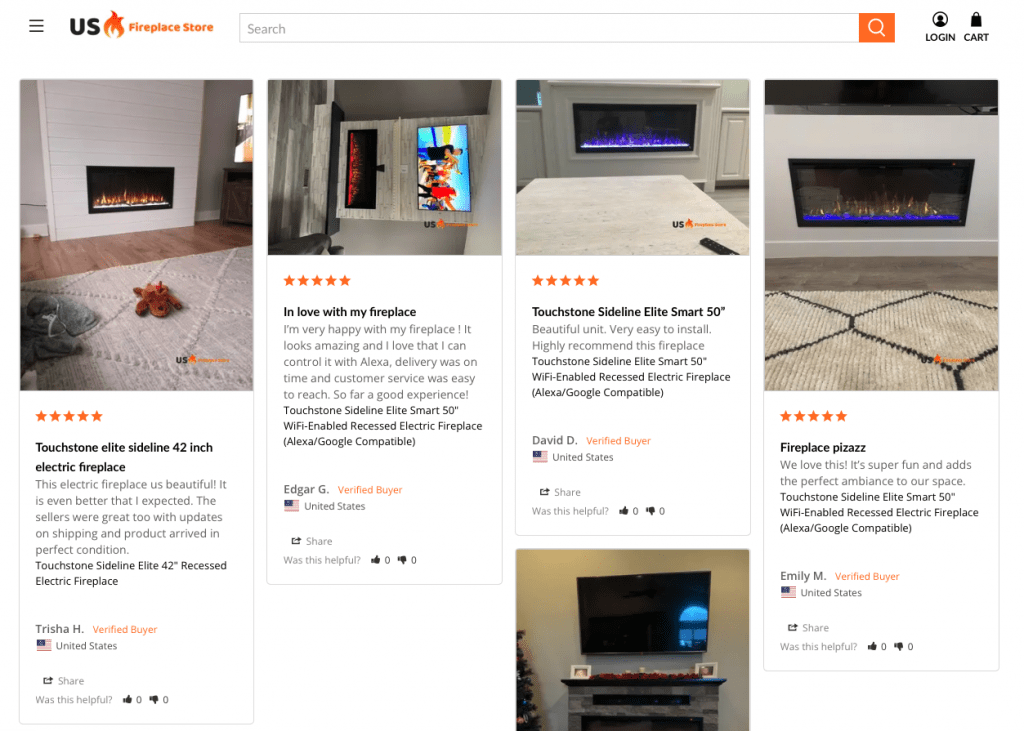
2. Create a Sense of Community in Your Social Media Presence
In 2021, the average person spent around 142 minutes (2h 22 minutes) browsing social media per day. Some of the top reasons for doing so included:
- Staying up to date with current news and events
- Finding entertaining content
- Filling up spare time
- Staying in touch with friends
- Sharing photos and videos with others
- Researching products to buy
Essentially, people went on social media to discover information, be entertained, establish and maintain connections, and seek shopping inspiration.
So what does this mean for eCommerce brands and their social media marketing strategies? They should look for ways to make all of these elements a part of their online presence.
By combining informative and entertaining posts with those that create a sense of community between brands and consumers, eCommerce businesses can ensure they’re more than just another business trying to sell products. Instead, they can become an irreplaceable part of their audience’s everyday routines. Social proof and UGC can both help brands achieve this effect.
For example, check out the Belkin Instagram account.
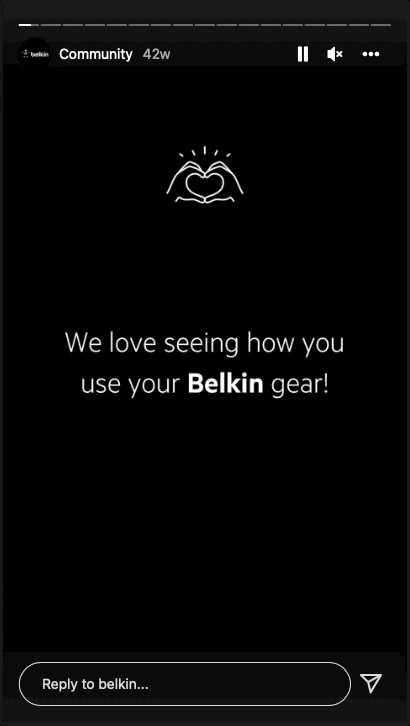
As you can see, the brand has a dedicated Community Stories tab, where it points out how much it loves seeing posts from its users. It shares some of the most impressive examples of social proof it has received through the social platform. Belkin puts in the effort to show its followers that it doesn’t just want to sell products, but rather offer experiences that people will love to include in their day-to-day lives.
3. Not Limiting Reviews to Product Pages
One common mistake eCommerce businesses make on their websites is believing that people only want to see product reviews on product pages. This is entirely untrue.
If you take a glance at the world’s most popular shopping platform, Amazon (which held 41% of the US eCommerce market share in 2021), you’ll see that social proof receives a prominent spot when displaying listings.
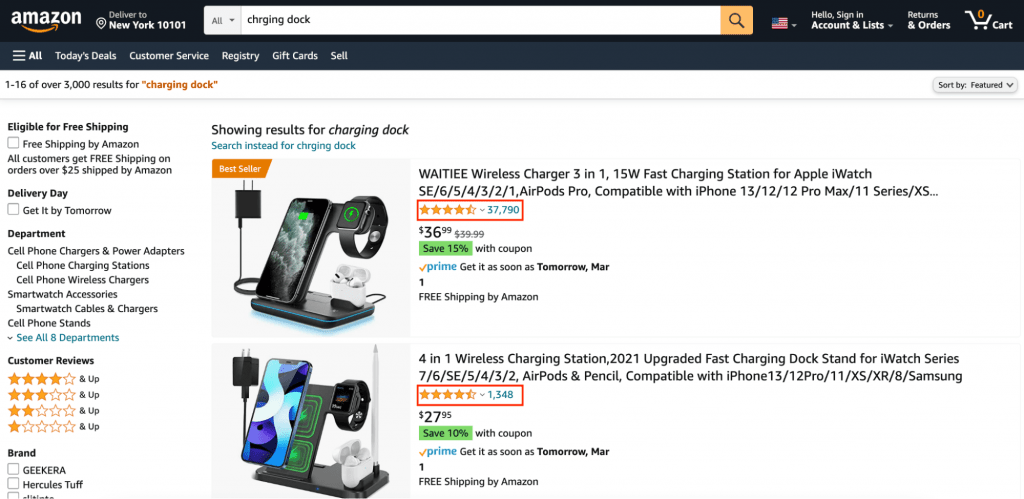
[Source: Amazon]
The reason for this is quite evident: people don’t always make it to a product page on their first visit. If there’s no signal telling them they’re looking at a great product/brand, they’ll navigate away and find an alternative that makes better use of social proof in its value proposition.
Therefore, to ensure the social proof on your eCommerce site has the highest chance of driving conversions, it’s not a bad idea to consider making it a bigger part of your homepage.
Dress Forms USA, for example, has a handy reviews widget in its hero section, which shows web visitors the latest product reviews sourced from all pages of the website.
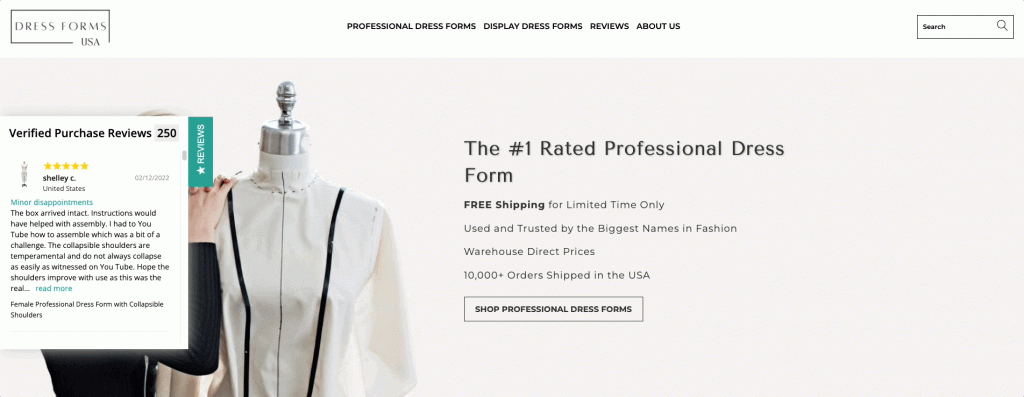
It’s an excellent strategy for the brand to highlight that it sells quality products while also compelling web visitors to consider social proof as a more influential factor in their purchasing decision-making process.
4. Go the Extra Mile with Product Reviews
Are you committed to using social proof to help your eCommerce business stand out? Consider ways to add extra features to your reviews, making them more helpful to shoppers browsing your online store.
Next-level features like filters, search functions, information about the reviewers, etc., can all play a crucial role in convincing web visitors to convert. That’s not just because they show transparency from your brand, but also because they provide valuable details that can help every single web visitor decide whether the products in your offer are the best choice for their needs.
If you check out the Freck Beauty website, you’ll see that the reviews section includes the following features:
- The ability to sort reviews by date, rating, helpfulness, or format
- Info about the reviewer’s eye color and skin tone
- A badge indicating that the reviewer’s purchase is verified
- Rating sliders for product features like color, ease of use, and longevity
- The number of people who rated the testimonial as being helpful
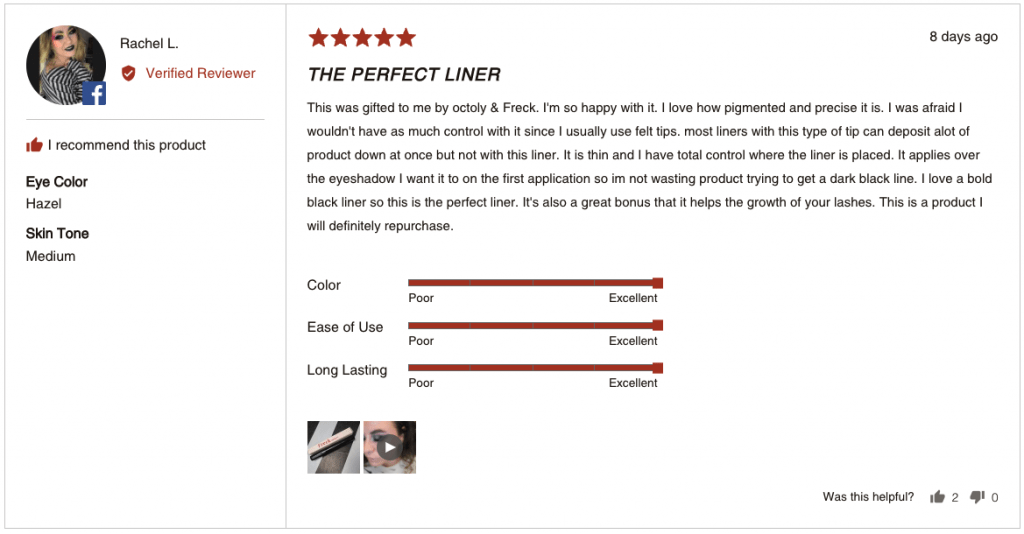
Not all brands can go into this much detail when displaying social proof on their product pages. Nonetheless, finding ways to bring something extra to standard ratings and testimonials does make a difference when convincing consumers to purchase.
5. Flaunt Your Earned Media
Social proof is not just about the feedback you get from your customers. It can also be composed of media mentions, expert opinions, and other brand-authority-building elements.
Showing off your earned media can be an excellent strategy to build authority for your brand, inspire trust among your target audience, and maximize conversions on your eCommerce site. Of course, the prerequisite for this is that you highlight mentions from publications that already have a great reputation in your industry.
For example, knowing that water sports enthusiasts are highly likely to be familiar with resources like SUPBoardGuide, InflatableBoarder, and Globo Surf, GILI Sports points out that it has earned mentions in these publications.
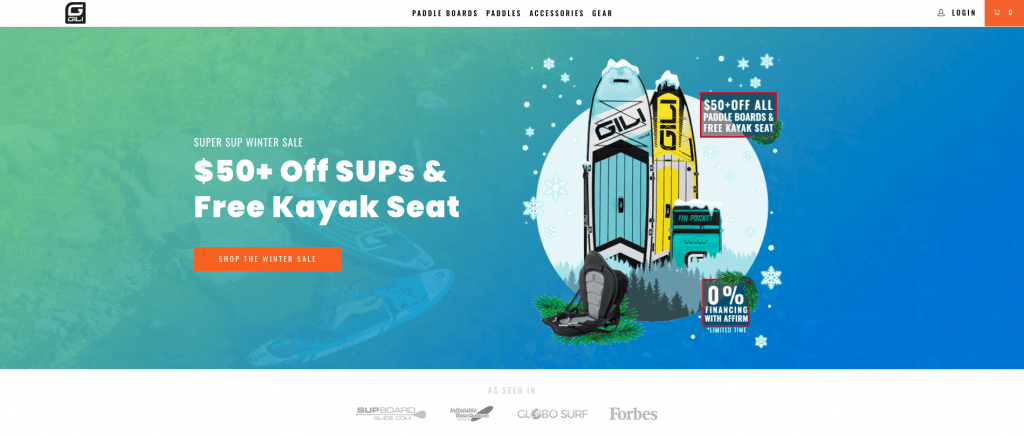
But what truly stands out in GILI’s approach is that it positions these earned media mentions above the scroll-line. That’s how the brand ensures that they’re seen by all web visitors, which effectively works to establish its trustworthiness in an increasingly competitive industry.
6. Combine Social Proof with Cross-Selling
Social proof is a powerful tool for maximizing conversions. However, as you look at the best practices for using it in 2022, it’s not a bad idea to look for creative ways to harness its power.
One method that could benefit you is combining social proof with cross-selling. This technique is an excellent opportunity to boost your AOV and positively impact your revenue. Additionally, it can also help you:
- Engage your web visitors
- Build a relationship with your buyers
- Show that you understand your audience’s needs (and are ready to deliver)
Don’t forget that the combination of social proof and cross-selling also allows you to deliver a personalized experience to your audience. That will become essential, especially as 71% of consumers expect personalization and 76% become frustrated when brands don’t deliver.
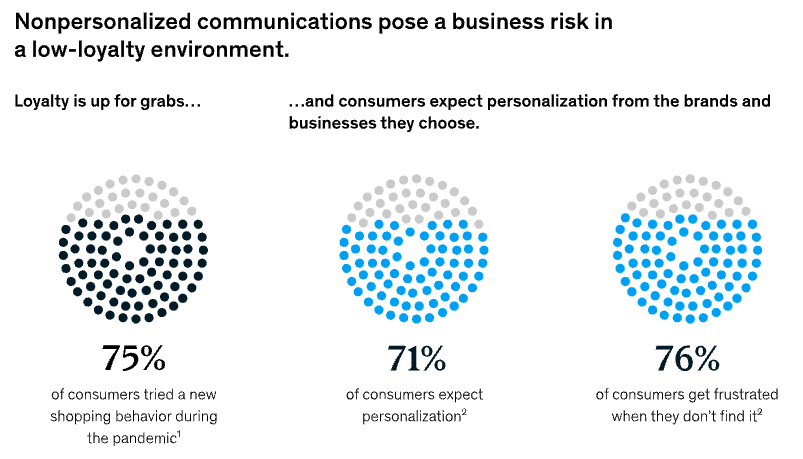
[Source: Mckinsey]
To get more out of the social proof on your eCommerce website, consider adding a “People also bought” section to your product pages, like the one below used by Canyon.
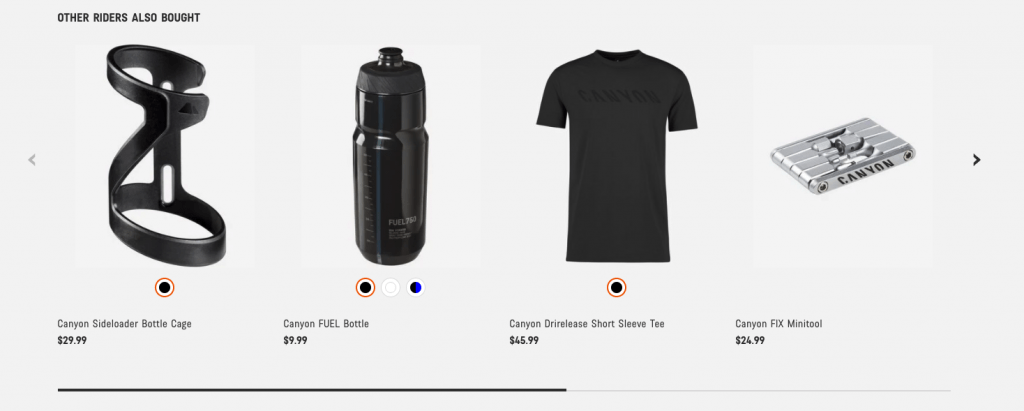
7. Showcase Your Reputable Customers
When utilizing these social proof strategies, the emphasis will always be on your brand, your products, and the unique value you can offer to audiences.
But what about moving the spotlight to your satisfied clients?
Studies have shown that showcasing reputable customers does just as much to benefit your business as displaying reviews or ratings.
In fact, comScore examined the hypothesis that adding a customer logo would increase the number of captured leads on product pages, and the results were impressive. The study found that showcasing reputable customers could increase the number of leads generated from product pages by as much as 69%.
So, if you’re looking for ways to get more out of the social proof on your website, consider placing the spotlight on your clients.
Voices does this by pointing out that its roster of clients includes Shopify, Microsoft, The History Channel, GoDaddy, and other major organizations. This tactic works because these are big brands from a variety of industries, and their successes testify to the fact that Voices offers a great solution.

Alternatively, if you feel like going into a bit more detail, you can create an entire Use Cases page, as done by Spike.
This company chose to conduct interviews with its users to show the variety of ways its product benefits them day-to-day. And it didn’t just gain recognition for Spike. It also managed to show that the brand cares about helping its clients succeed, making it an even better choice for those in need of a new professional communication solution.
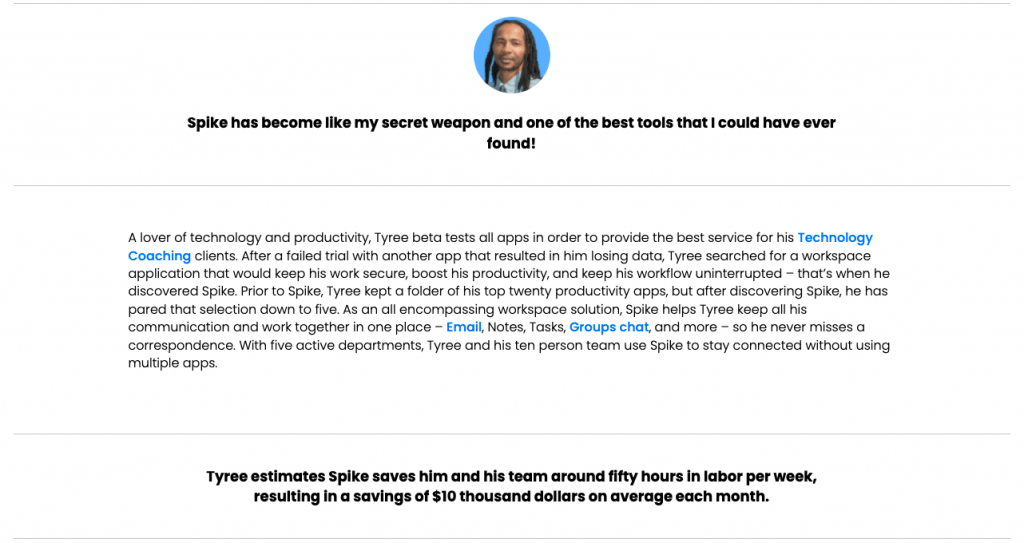
8. Make Use of Google Reviews
Another great way to get more out of social proof in 2022 is to think locally.
We now know that people tend to look up brands before shopping with them. So, to help them discover your business and see that it’s a trustworthy organization, you can register your eCommerce brand on Google Business.
By doing this, you’ll have the option to update your profile with relevant information. Moreover, you’ll also have the opportunity to do so on a widget that shows up on all SERPs and that, coincidentally, shows customer ratings, which are sure to impact your audience’s purchasing decisions.
For example, if you google a business like Rain or Shine Golf, you’ll see that the eCommerce brand has a fully optimized Google Business profile.
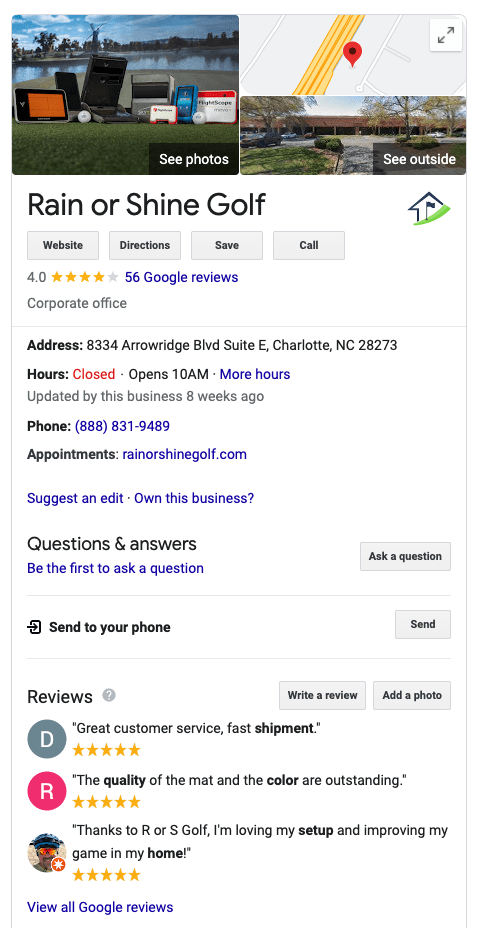
And it doesn’t just provide relevant information to potential customers.
More importantly (at least when discussing social proof), it shows potential buyers that the brand in question enjoys high ratings and is an excellent choice for anyone considering investing in a golf simulator for their home.
9. Show Real-Time Sale Notifications
Lastly, as you look for effective ways to utilize social proof in 2022, don’t forget that adding a bit of movement to your website always helps engage audiences and draws their attention to your high-value page elements.
So why not use it to show that your business is trusted by shoppers? Or even better, that it delivers products to buyers from all over the world?
A great way you can do this with social proof is to use real-time sales notifications on your homepage.
Just look at the Orizaba Original website. You’ll see that the brand’s social proof strategy works to prove the company’s relevance and trustworthiness by displaying pop-ups every time a product is sold.
This method works magnificently for the niche brand, especially since buyers often feel uncomfortable shopping with smaller labels.

[Source: Oriza Baoriginal]
The pop-ups prove that Orizaba Original is a genuine business, as they do more than display a notification every time a sale is made.
They also include info about the buyer’s location and the product they chose, confirming that the eCommerce business is legitimate and that consumers trust it despite its small presence and niche focus.
Wrapping Up
As you can see, making social proof a part of your eCommerce business growth doesn’t have to be complicated. However, it does require following a couple of well-developed strategies.
Are you ready to make the absolute best of reviews, ratings, testimonials, UGC, and case studies in 2022? If the answer is yes, give one of the tactics we’ve talked about a try. To recap, stores should:
- Combine social proof with UGC
- Create a sense of community in your social media presence
- Not limit reviews to product pages
- Go the extra mile with product reviews
- Flaunt your earned media
- Showcase your reputable customers
- Combine social proof with cross-selling
- Make use of Google reviews
- Show real-time sale notifications
In doing so, don’t forget to test the results and make any necessary tweaks to highlight the things your brand excels at. Sure, it may require a bit more effort than sourcing star ratings from Trustpilot or Google. However, even if it bumps up your conversion rates by a few percent, the effort and investment will have been worth it.

Travis Jamison
Travis Jamison is an entrepreneur turned investor. After selling a couple of businesses, he shifted his focus toward investing. But he was disappointed by the lack of options for entrepreneurial-type investments – like buying websites & investing in small, bootstrapped businesses. So he started Investing.io to provide a home for other entrepreneurs turned investors.
Comments
comments
Powered by Facebook Comments



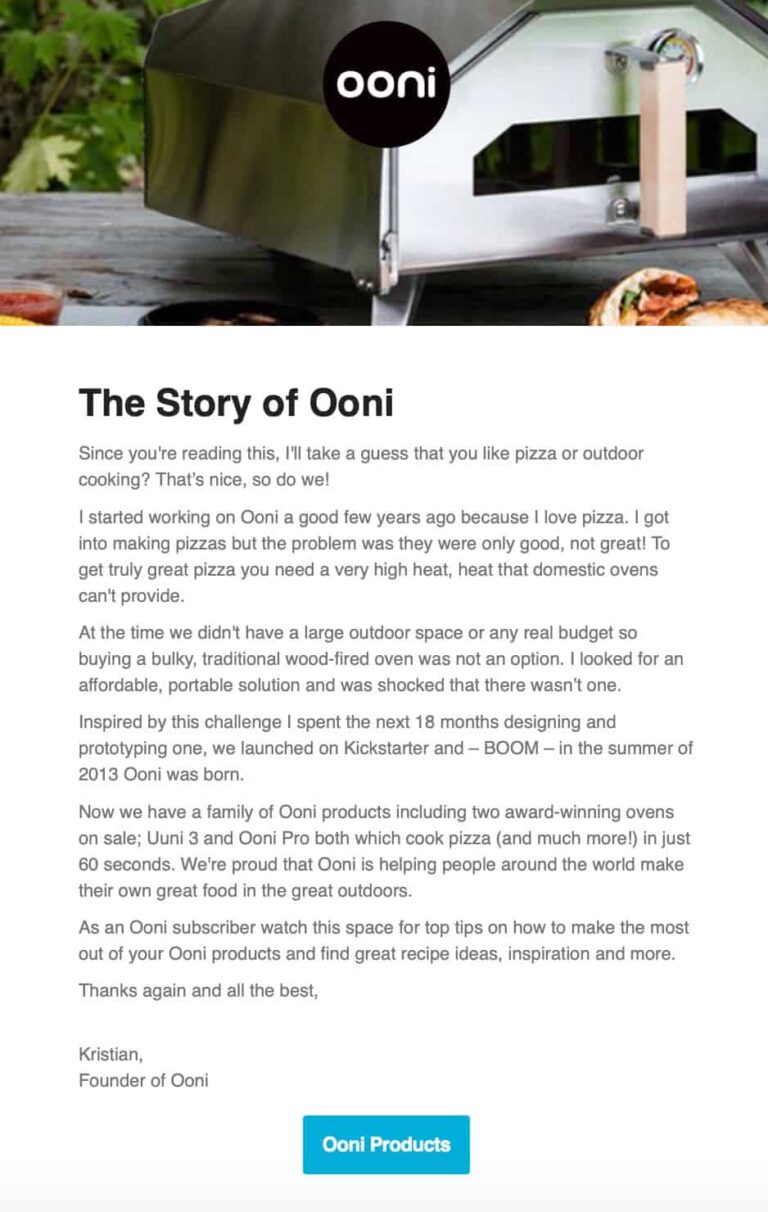
![13 Best YouTube to MP3 Converters [Free & Easy to Use]](https://thegateway.net.au/wp-content/uploads/2021/12/13-best-youtube-to-mp3-converters-free-easy-to-use-768x403.png)
